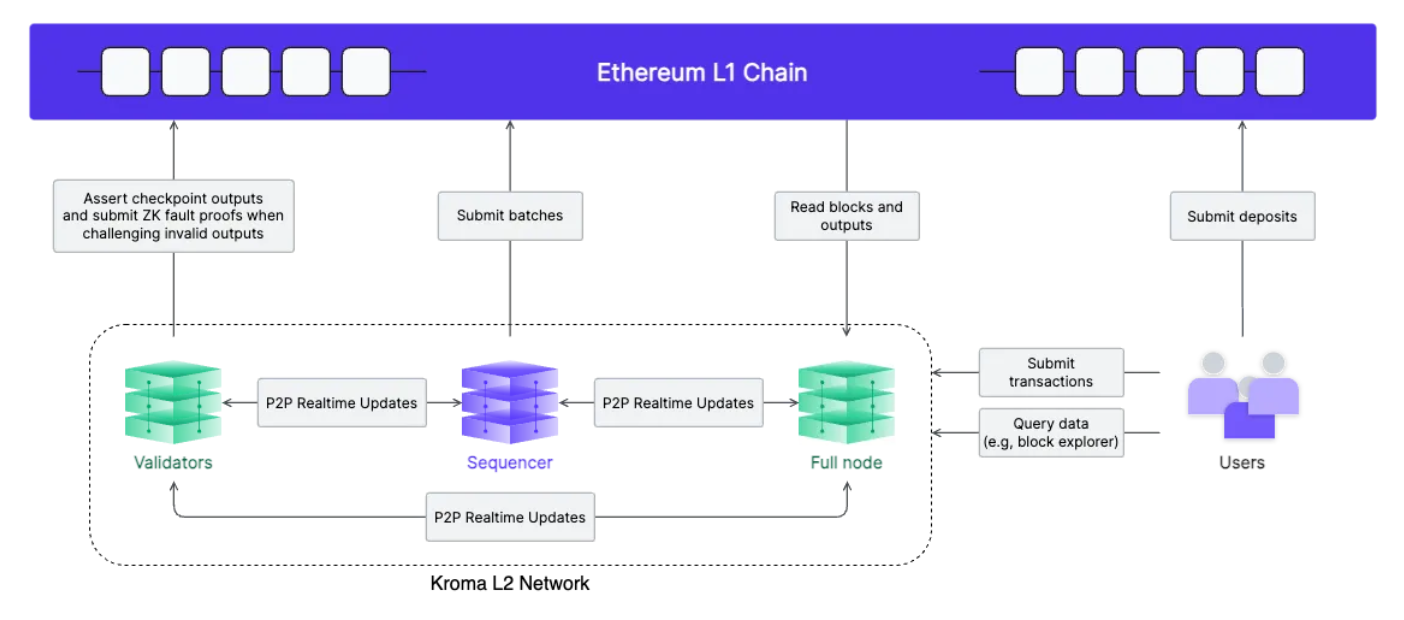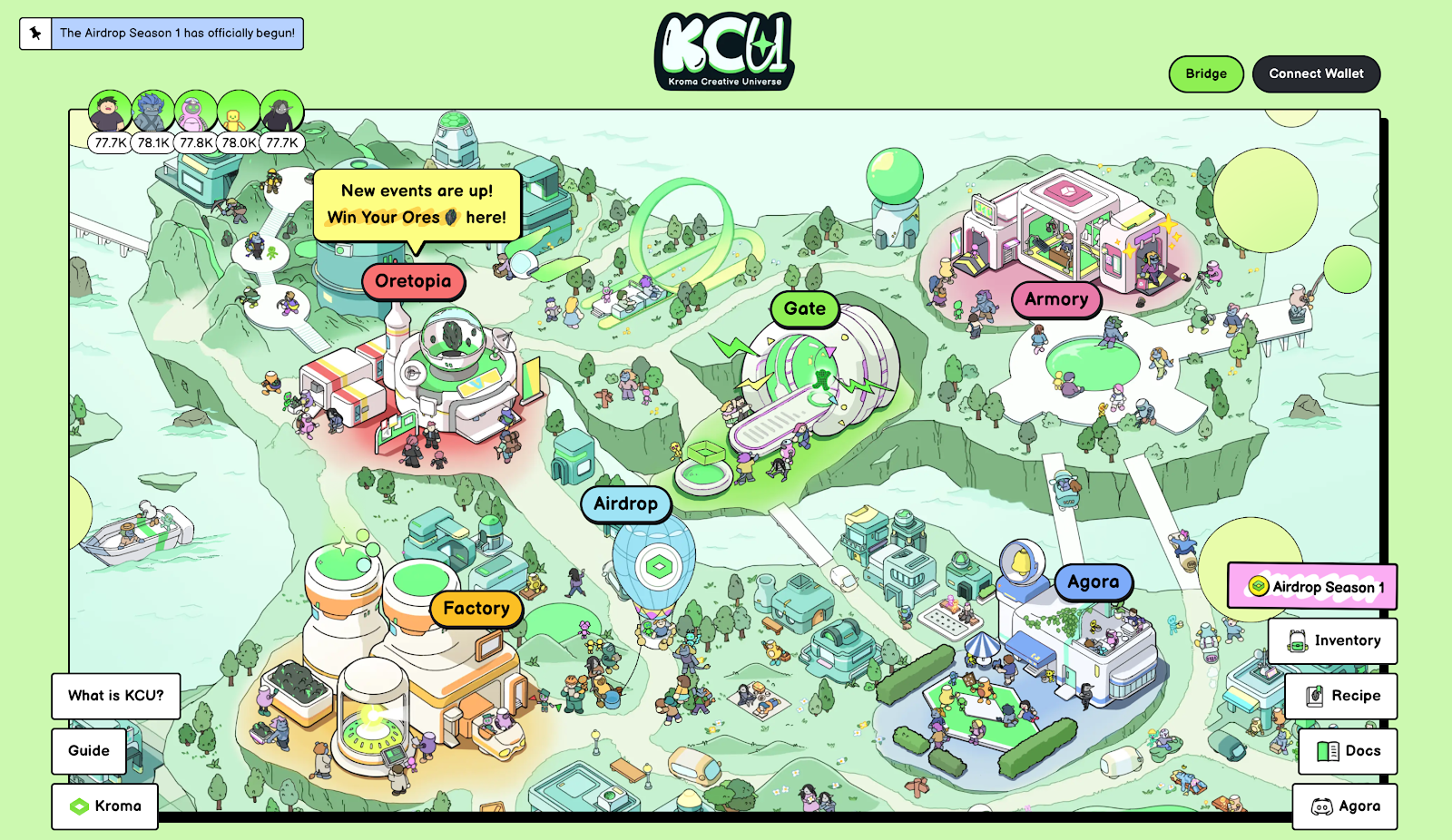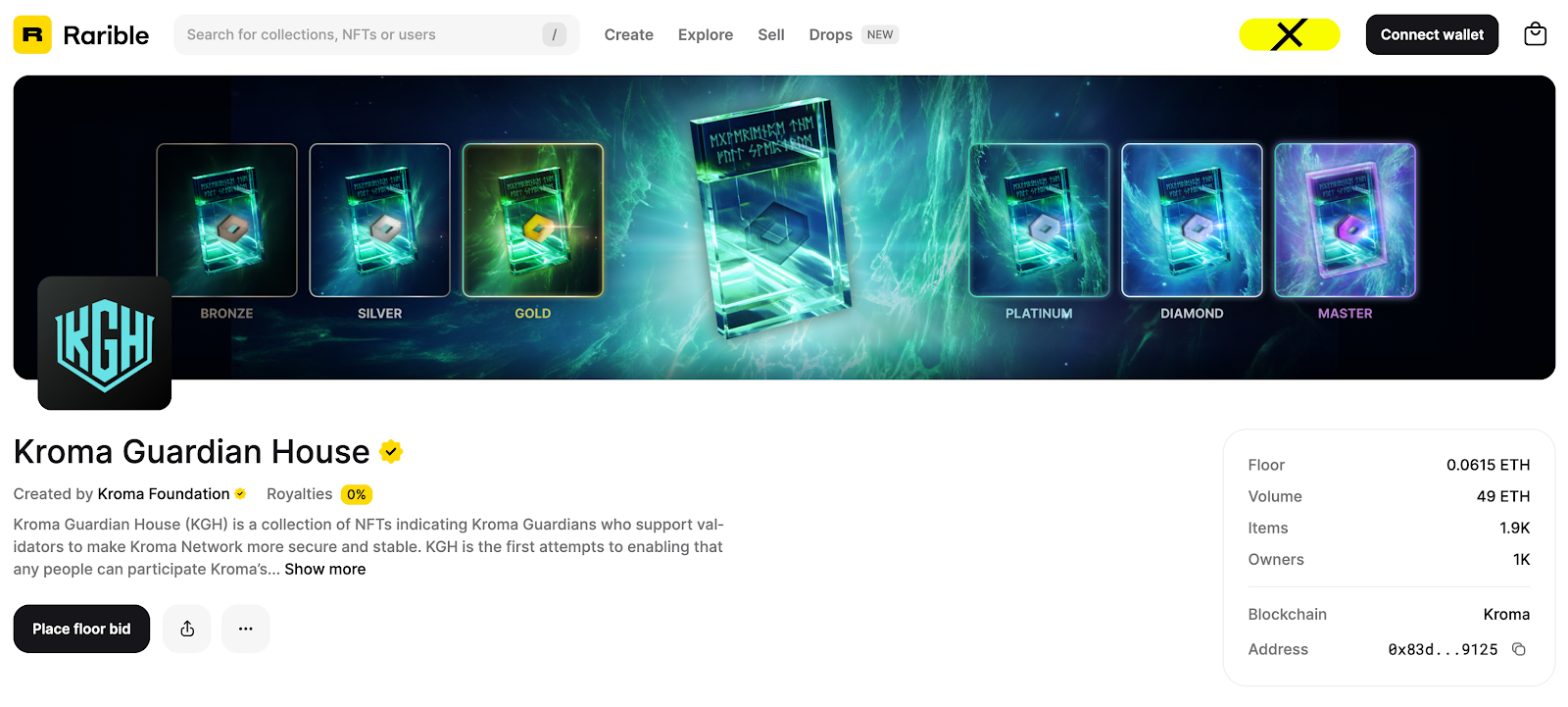Kroma (KRO): The Layer 2 Supercharging Gamified Web3
Gaming is one of the fastest growing niches in the crypto industry, but further growth of web3-based games and gaming platforms is hampered by network congestion, poor scalability and high transaction fees on Ethereum (ETH) — a blockchain that is frequently the default choice for decentralized app (DApp) developers. To provide a smooth gaming experience, the underlying platform needs to feature near-instant transactions, low latency and affordability. Unfortunately, Ethereum often struggles in all of these areas.
Kroma is a Layer 2 (L2) rollup solution dedicated to web3 gaming that aims to address the speed and cost inefficiencies of the Ethereum Layer 1 (L1) blockchain. Using a combination of optimistic and zero-knowledge (ZK) rollup features, Kroma features two-second block times and gas fees of tiny fractions of a cent. Having launched its mainnet in September 2023, Kroma has already built up a young but thriving ecosystem of DApps, not only in the niche of gaming but also in decentralized finance (DeFi), non-fungible tokens (NFTs), infrastructure and more.
Key Takeaways:
Kroma is a Layer 2 rollup solution dedicated to web3 gaming and designed to address the cost and speed inefficiencies of the Ethereum blockchain.
Its platform combines the elements of optimistic rollups with zero-knowledge (ZK) proofs.
The network's native cryptocurrency, KRO, is envisioned to support three key functions — staking, governance and gas fee payments. You can participate in the KRO airdrop via Bybit Airdrop Hunt or KRO's community airdrop.
What Is Kroma?
Kroma is a gaming-focused, Ethereum virtual machine (EVM)–equivalent Layer 2 rollup platform linked to the Ethereum blockchain that uses a combination of optimistic rollup and ZK proof technologies. Built using the OP Stack rollup development framework, Kroma is part of the Optimism (OP) Superchain network, an ecosystem of rollup chains based on OP Stack. Kroma aims to provide a highly scalable and low-cost environment for web3 game developers and users.
The platform's mainnet was launched in September 2023, and already boasts over 70 active DApps (as of early November 2024). GameFi apps make up about one-third of these, with the remaining ones primarily focused on NFTs, DeFi and infrastructure.
Kroma offers gamers and developers a wide range of user-friendly tools and apps. One of these is Kroma Bridge, a solution that lets you seamlessly deposit crypto assets from the Ethereum Mainnet to Kroma and withdraw from Kroma back to Ethereum. Another one is Blockscout, a versatile blockchain explorer that provides detailed statistics for hundreds of decentralized networks, including Kroma's own mainnet and testnet, Ethereum, Optimism (OP), Base (BASE), Immutable X (IMX), Gnosis (GNO) and more.
There are also over 20 active gaming apps from a variety of genres represented on Kroma. One of the more popular apps is Wellxy, a game that allows you to earn points by exploring galaxies and doing exercises such as squats, combining fun with fitness. Another one is Xenobunny, an omnichain artificial intelligence (AI) strategy game integrated with DeFi features.
Kroma was launched by Lightscale, a blockchain development outfit founded by Taekyu Park and Derek Junyoung Chang. Lightscale is a subsidiary of Wemade, a South Korean game development giant and one of the leading Asian gaming companies.
How Does Kroma Work?
There are four primary network actors on Kroma — validator nodes, full nodes without block validation responsibility, sequencers and end users. End users interact with the Kroma L2 network directly, though they also have the option to utilize Ethereum to move assets between the L1 blockchain and Kroma.
The sequencer is a critical node that batches and organizes the L2 off-chain transactions into blocks and submits the processed blocks to the L1. Validator nodes are responsible for verifying the integrity of transactions and blocks. Kroma validators can also submit zero-knowledge Fault Proofs to challenge a block's validity on L1. In addition to validators, there are also full nodes without block processing responsibility who read transaction data and outputs, and act as part of the overall consensus mechanism to keep the integrity of Kroma intact.
Using this setup, Kroma can deliver exceptional performance in terms of speed and costs. Transaction blocks on the platform are finalized within two seconds, while the average gas fee on the network is small fractions of a cent, a stark contrast with Ethereum's average fee of around $3 (as recorded on Nov 2, 2024).
Transitioning From Optimistic Rollup to ZK-Rollup
Although the Kroma network was built using the OP Stack, a popular framework for optimistic rollups, it has modified the default OP Stack setup to incorporate ZK proofs to provide a more robust and fault-proof system. Normally, transaction blocks processed on Kroma use optimistic validation, i.e., they’re considered valid unless a validator raises a challenge for a specific block, questioning its validity. Additionally, Kroma uses ZK proofs if a block's validity is challenged. The proofs serve as a backup mechanism to help process transaction blocks as efficiently as possible in case of potential validity challenges.
While the platform currently represents a mixture of optimistic and ZK validation, Kroma aims to eventually move to a universal ZK-rollup based on ZK proofs as its only validation mechanism. Despite the move to a ZK-based proof system, the platform will remain compatible with the Optimism Superchain. Thanks to the modular nature of the OP Stack technology, ZK proof–based rollups can also be part of the Superchain.
Kroma Key Features
Kroma Spectrum
Spectrum is Kroma's native liquid staking solution. Using it, you can deposit Ether (ETH) and various liquid staking tokens (LSTs), such as stETH and eETH, into a vault in order to receive Spectrum's spETH liquid restaking token. The vaults are hosted on the ether.fi DeFi platform. spETH is locked in these vaults in the form of weETH tokens, earning you additional yields. While weETH earns you yields through the vault, the spETH that backs it can simultaneously be used to accrue reward points from three DeFi platforms — Kroma, ether.fi and EigenLayer.
Despite the somewhat convoluted design — which is definitely not unusual in the world of DeFi — Spectrum's liquid staking and restaking services can be a great way to earn additional yields and loyalty points on several DeFi platforms using the same underlying investment.
Kroma Creative Universe (KCU)
Kroma Creative Universe (KCU) is designed to attract users from across the Kroma ecosystem to participate in a common gamified environment. In KCU’s gamified environment, hosted on the Kroma network, you can mint your own Kromans, dwellers of the Universe; complete a variety of quests to earn Ore, a resource used to reveal Mystic Boxes; and use Mystic Boxes to reveal additional gear and items to equip your Kroman NFTs. While participating in the KCU and completing quests, you can also socialize with other players through their Kromans. Participation in the KCU also gives you opportunities to qualify for KRO airdrops.
Kroma Guardian House (KGH)
Kroma Guardian House (KGH) is a solution designed to help any user contribute to the block validation process on Kroma Layer 2 and earn a share of block rewards. This staking format is possible thanks to Kroma's delegated proof of stake (DPoS) block validation procedure. KGH was launched in late October 2024.
KRO Staking
Holders of Kroma's native cryptocurrency, KRO, can stake their funds on their preferred validator to help secure the network's operations, earning a share of block rewards commensurate with the amount they stake. Each validator node charges a small commission on the total amount earned by a delegator. The rate of commission varies between validators, typically ranging between 3% and 10%.
Validators themselves stake KRO on Ethereum to gain the right to process transaction blocks. Kroma claims that there have been more than 350 nodes registering on the network as validators since the platform's launch. However, as of Nov 3, 2024, there are only 13 validators to whom you can delegate your assets through the KGH interface. These are mostly members of the Kroma Security Council, which we'll cover in the next section.
KGH NFT Staking
Another group of users who can take advantage of staking opportunities on Kroma is that of holders of KGH NFTs, an NFT collection issued by the project that sold out by January 2024. However, these NFTs can still be bought in the secondary market via Rarible’s NFT marketplace. Using these NFTs to back up a validator earns you boosted staking rewards on top of the standard rate.
Kroma Security Council
The Kroma Security Council is a group of key network actors whose main responsibility is to jointly act as the final layer of security for the platform's proof system. If there are inconsistencies or problems with Fault Proofs raised on the network, council members are expected to resolve these.
Members of the council are also involved in decision-making processes related to Kroma's smart contracts on L2 and L1. Kroma currently lists nine organizations as members of its Security Council. Among these are the nonprofit Kroma Foundation, as well as Animoca Brands, one of the giants of web3 gaming.
What Is the Kroma Crypto Token (KRO)?
Kroma's native cryptocurrency, KRO, is an ERC-20 asset with a total supply of just over 875 million and a maximum supply set at 1 billion. KRO is envisioned to power three key functions on the network — gas fee payments, staking and on-chain governance. The token was launched on Oct 30, 2024, over a year after Kroma's mainnet introduction. Its supply allocation shares are shown in the chart below.
Kroma (KRO) Airdrop
KRO's community airdrop is designed to reward various groups of early adopters and active participants on the network. Besides this airdrop, you can also take advantage of the KRO Airdrop Quest between Oct 29, 2024, 10AM UTC and Nov 12, 2024, 9AM UTC via Bybit's Airdrop Hunt program. Under the terms of the airdrop campaign, you can receive a share of the 6.6 million KRO prize pool by following Bybit’s and Kroma’s accounts on X, reposting the campaign announcement with comments, depositing at least 1,000 KRO to your Bybit account and trading at least 100 USDT worth of KRO on Bybit's Spot market. You can also earn KRO rewards by inviting friends and new users to join Bybit.
Closing Thoughts
Web3 gaming depends upon the ability of blockchain platforms to provide the necessary levels of speed, scalability and cost-efficiency. With its highly efficient rollup setup, Kroma hopes to become a key enabler of blockchain-based gaming. Fast transactions, two-second block times, minuscule gas fees and the security of ZK proofs make Kroma a potentially serious player within the web3 gaming niche.
Having operated without a native token for over a year, Kroma finally launched KRO in late October 2024. This new token might significantly boost the platform's appeal and recognition among crypto gamers, developers and investors. However, these projections are currently assumptions, and only time will tell if this new platform progresses into an influential web3 gaming sector player.
#LearnWithBybit





